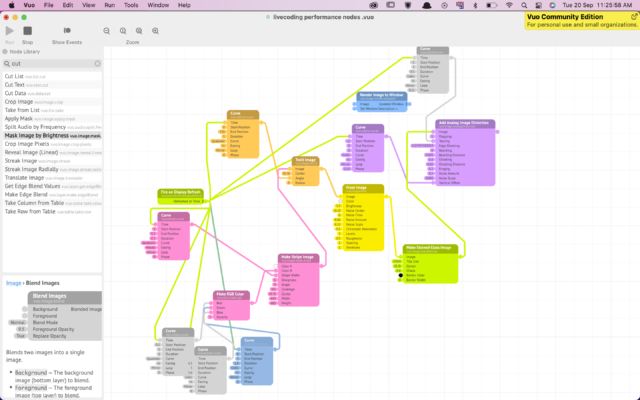The program I chose for this research project is Vuo.
Vuo was originally designed after Apple’s Quartz Composer (QC), which was released in 2005. The producers of Vuo felt like Apple’s QC was not growing or improving and therefore decided to create a program that could carry out the same functionality as QC and more. It was first released in 2014 and has grown to have a large community.
Vuo allows its users to create visual compositions using a node programming method, which makes its GUI very user friendly and can be used with little to no prior experience in coding. If needed, Vuo also allows its users to manipulate shader code and add shaders from the web, which makes it suitable for both beginners and professionals. Although Vuo does not have a way of composing music in the program, it has some music processing capabilities which makes it a very appealing platform for music visualization projections and performances. It is also used for projection installations and performances as it has a built-in function to project a composition onto a dome or other surfaces. I think it’s also important to note that Vuo can also be used to create and manipulate 3D graphics, images and videos.
There is definitely a lot to unpack in Vuo, but I decided to focus on creating a 2D composition. What I liked the most about Vuo is the ability to see how everything connects and what the effect each node has on the image. One thing I noticed is that there is a small lag each time a node is connected, which causes the program to stop for a bit, making the transition between effects unnatural for live coding.
Final Performance:
Nodes used:
